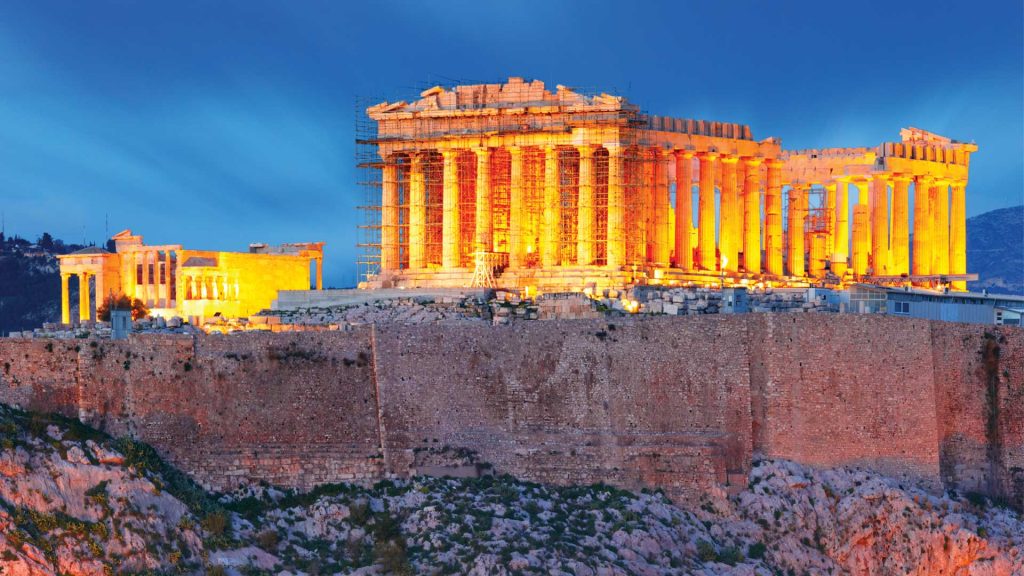Soul of Greek Classicism
Sandip Hor travels to Greece and looks back on its ancient history
Deriving its name from the Olympian goddess Athena, the 2,500-year-old city-state of Athens enjoyed a golden age some 500 years before the Christian Era (CE) when it emerged as the cradle of Western civilisation.
An array of monuments ranging from temples and theatres, to colonnaded streets, plazas and archways were constructed during this period.
Conquerors such as Alexander the Great of Macedon and the Roman Emperor Hadrian added more architectural facets to the Grecian landscape. And even today, the ruins of Athens connect the past and present, making this ancient city one of Europe’s most visited destinations.
THE ACROPOLIS Athens’ star attraction is the Acropolis, which was built in the 5th century BC on a 150 metre high flat-topped rock and populated with several marvels.
The centrepiece of the arena is the Parthenon, which is a marble edifice that once housed a mammoth gold and ivory statue of the goddess Athena. The image of this rectangular masterpiece, flanked on all sides by huge columns, is the most familiar emblem of Greece.
CITY OF TEMPLES Sacred buildings housing statues of Greek gods and goddesses were once the most important public places in Athens.
Among the most visited are those dedicated to Zeus, Hephaestus, Athena Nike and Poseidon. What’s left from these structures are mostly marble columns resting on rectangular slabs. Obviously, they look much the same… so it’s necessary to picture their original grandeur in your mind.
THINKERS PULPIT The ruined Panathenaic Way inside the Agora, which was the city’s ancient marketplace, is the walkway to follow in the footsteps of Socrates, Plato and Aristotle. It’s where these three great classical philosophers would regularly meet to address their pupils.
CONNECTING ERAS Featuring labyrinthine streets and neoclassical architecture, the quarters of Monastiraki and Plaka electrify visitors as being impressive platforms between the past and present.
Plaka is the oldest settlement in Athens and claims to be the city’s gastronomic centre. Monastiraki is where an Ottoman mosque shares space with the remains of a Roman library and Hellenistic water clock, and draws visitors to its bustling markets stalls that sell everything from junk to jewellery.
DELPHIC ORACLE Visitors often travel to Delphi, which is located around 150 kilometres away, to visit the Temple of Apollo where an oracle once lived. Through the divine inspiration of Apollo, this woman could foresee the future and many fabulous tales emerged about her predictions.
The most famous prophecy concerns King Oedipus of Thebes who was told his terrible fate… that of unknowingly killing hisfather and subsequently marrying his mother.
